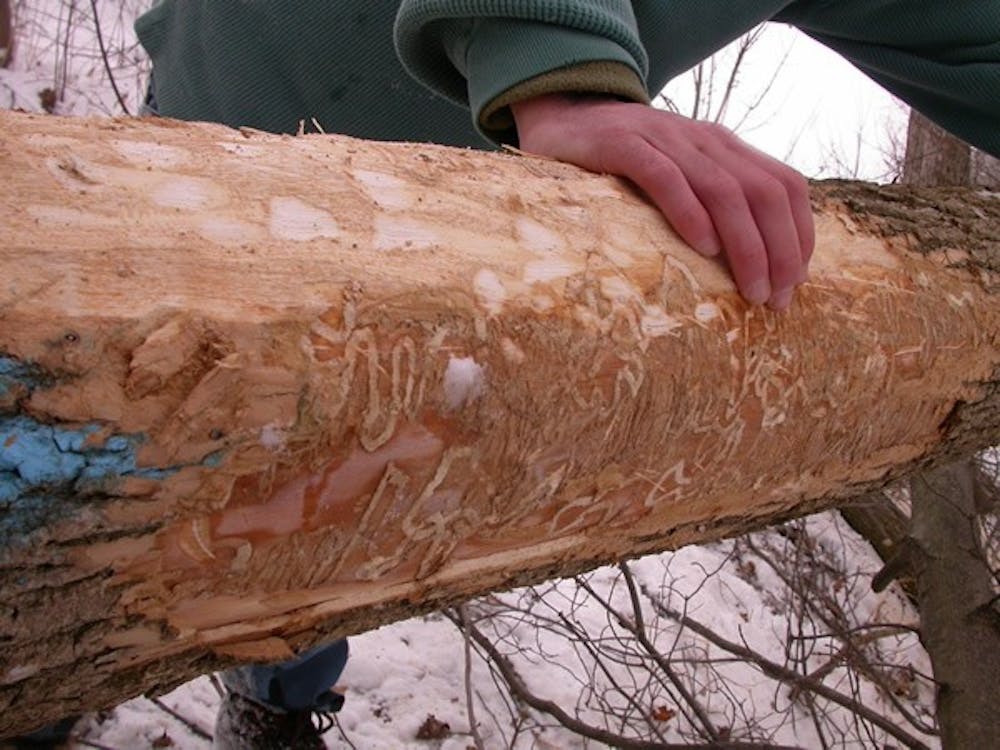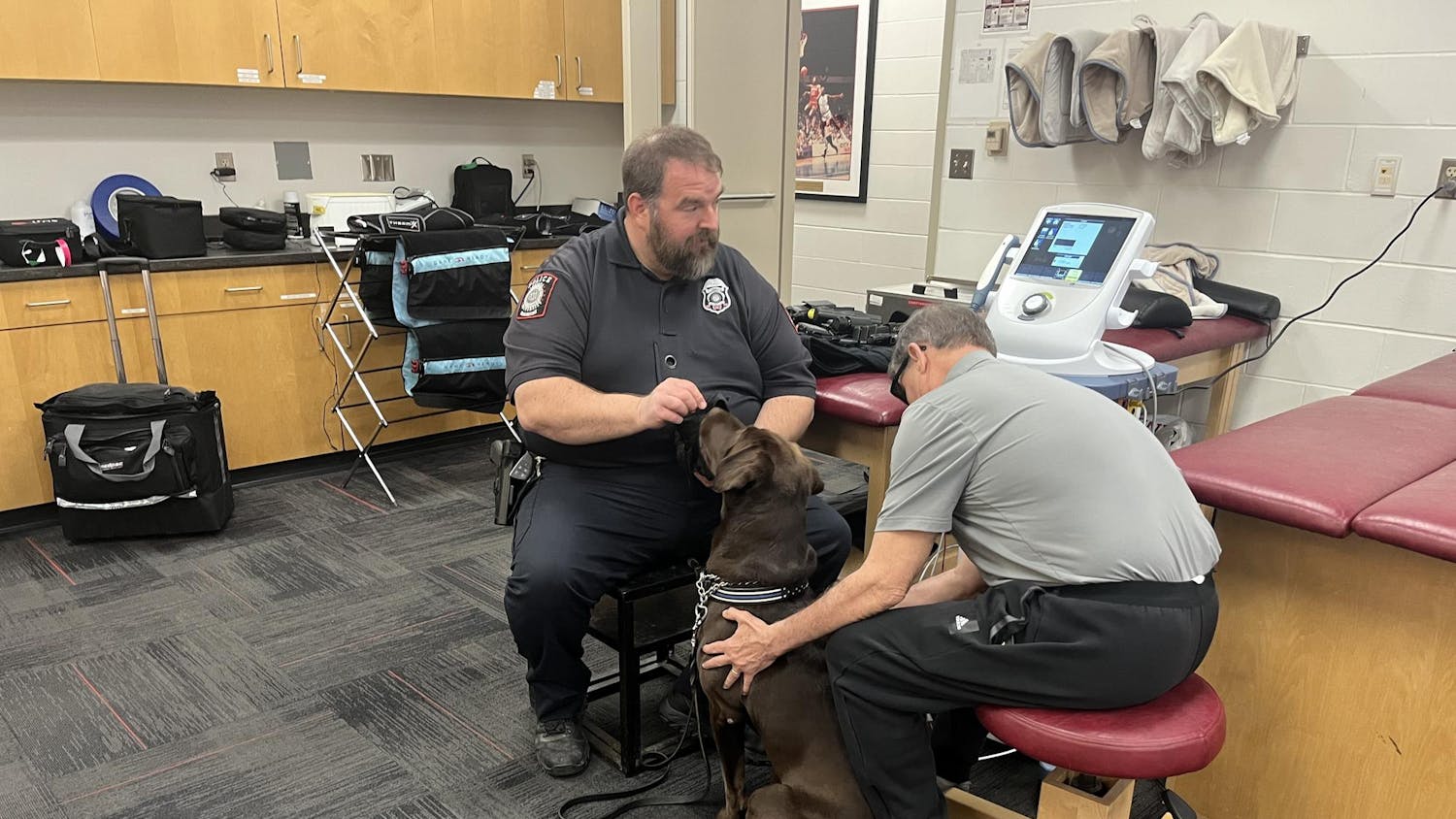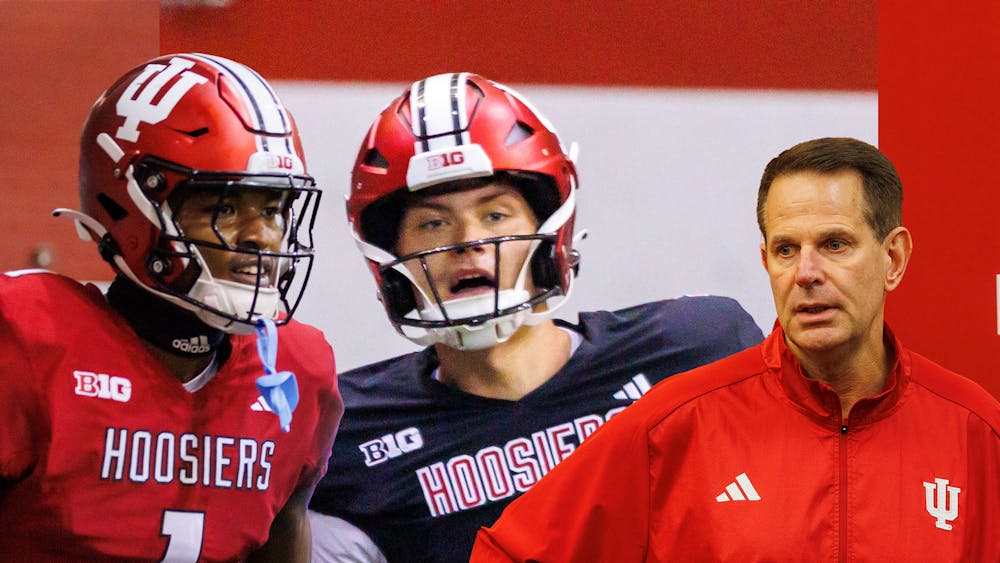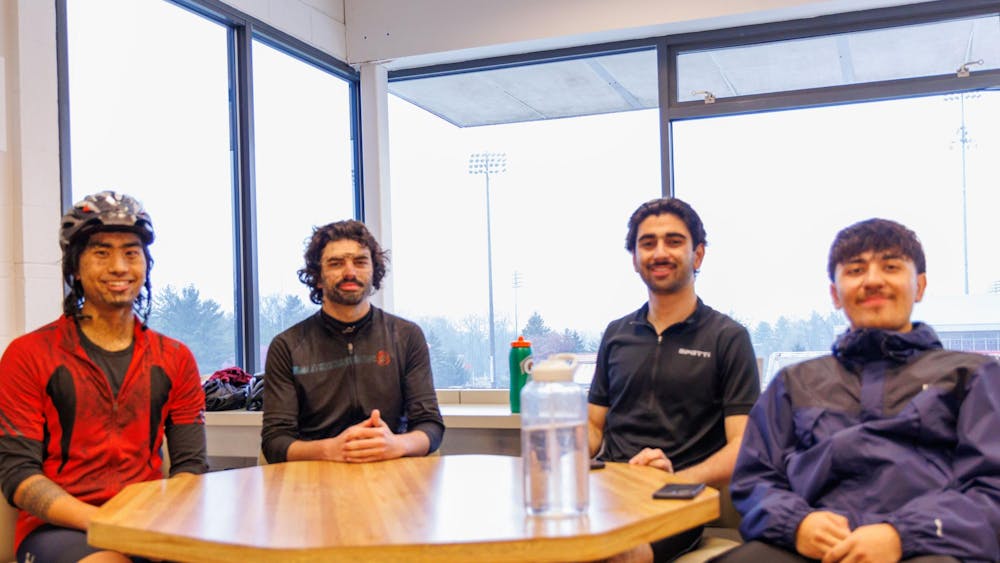The invasive emerald ash borer, an exotic pest from Asia, made its way to Bloomington in late 2012.
It burrows into the bark of ash trees during its larval stage and destroys the tree’s vascular system. Most trees infested with the emerald ash borer die within two years.
Because the EAB eats ash trees exclusively, the city’s urban forestry program is focusing its attention on about 700 ash trees currently located along city streets and in public rights-of-way.
Budget constraints do not permit the chemical treatment for the 700 ash trees. The cost of curing one tree is about $120-150 so the City of Bloomington is considering a combination of three options for the ash trees: treat ash trees with an insecticide to prevent an infestation, leave ash trees untreated or remove the ash trees.
Lee Huss, the urban forester, will spend one month marking and assessing the city’s ash trees. Each publicly owned ash tree in Bloomington will be marked with a dot of purple paint.
“A lot of people don’t even know what an ash tree is,” Huss said. “If you see these purple dots, you’re gonna know that’s an ash tree. We’re hoping, by marking some, it helps people identify that they have one, too,” ?Huss said.
After the evaluation of the overall health of ash trees, the Parks and Recreation Department and the Bloomington Tree Commission will save high-value ash trees that are at least 12 inches in diameter, in good health and fiscally possible to save. Ash trees already infected by EAB and in poor health will be removed to decrease the potential number of host sites for EAB.
People can save ash trees by injecting insecticide directly into them. In order to protect trees from EAB effectively, insecticide must be injected between April 1 and May 15 before the EAB larvae hatch and begin to feed, said Mick Renneisen, administrator for the Bloomington Parks and Recreation Department.
“We have a responsibility to minimize the spread of EAB as much as possible by removing their food source, but we also have a responsibility to protect and nurture our urban trees,” ?Renneisen said.
The city’s urban forester will evaluate only those trees that are publicly owned, but noted that landowners with ash trees have the same three options as the city does for treating, leaving or removing.
If the private landowners find there are symptoms of EAB, such as branch dieback, woodpecker activity, D-shaped exit holes in the tree’s bark, and S-shaped channels found under the tree’s bark, the tree is likely attacked by EAB, Renneisen said.
Private landowners can get help identifying ash trees and information about the long-term commitment and cost for treating their own ash trees at extension.entm.purdue.edu/EAB.






